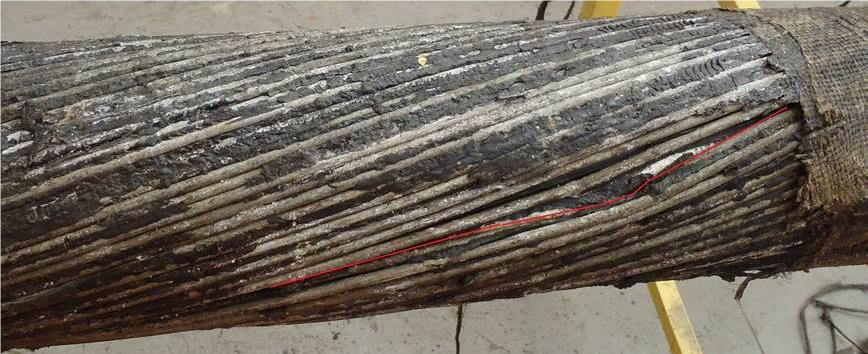Forensic Investigation into 34kV Cable, Failure During Installation Testing
Both samples had shown signs of failure at the cable hang-off location once they had been installed. Dissection of both samples revealed evidence of damage likely to have been caused by hand-tooling used during installing into the hang-off. This included visible disturbance of the bedding layer between armour wires and localised deformation of the armour wire helix.

The presence of additional mechanical damage (cuts/lacerations and gouges) in the conductor core sheaths, close to the obvious burn through damage, on both cables gave an indication that there had been manual operations performed in this location which could have caused this damage.
It was reasonable to suggest that similar sheath damage (sufficient to either penetrate or lessen the thickness of the core sheath) at the fault site was the reason the cable failed when testing between the conductor screen and the armour wires.
The damage appeared only in the area of the hang off location (not repeated at other areas of the inspected conductor sheaths), so it was likely this damage occurred during the installation of the temporary hang-off. This was further supported by the Microscopy report which showed damage to the armour wires which had been notched by a blade of around 1mm thickness in this location.
As there was no further damage to the conductor cores away from the outer exposed cable at the hang off location, it was considered that a cable manufacturing fault was extremely unlikely.